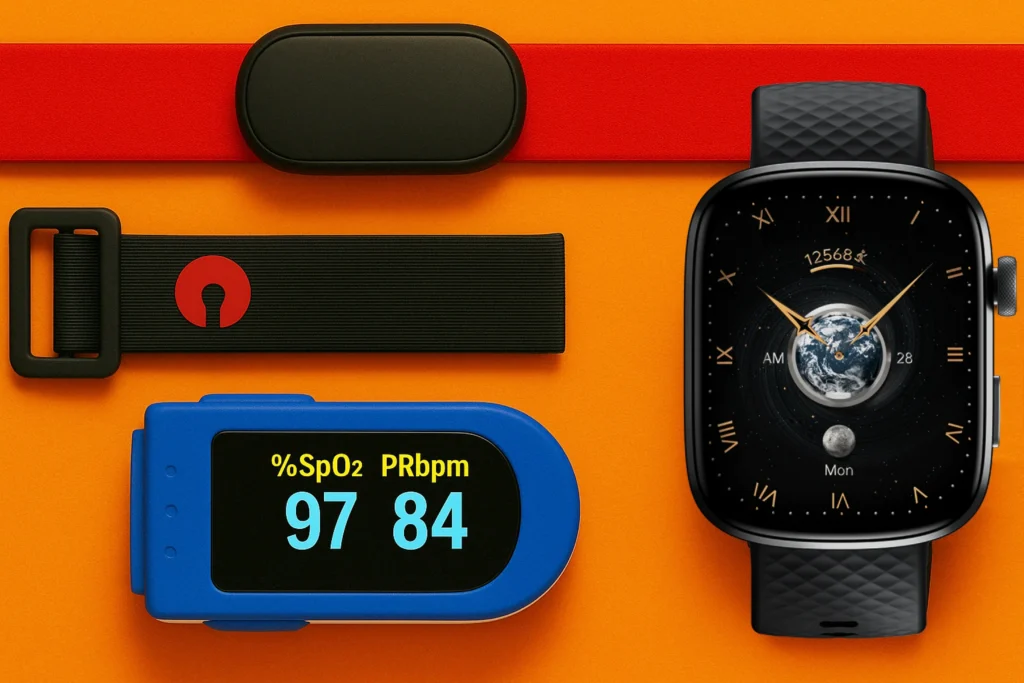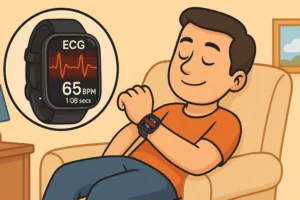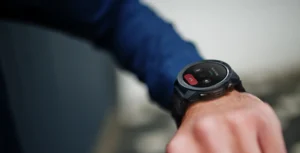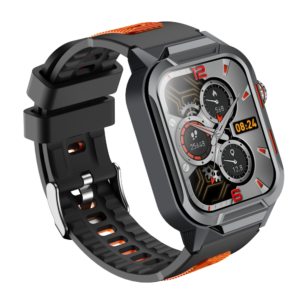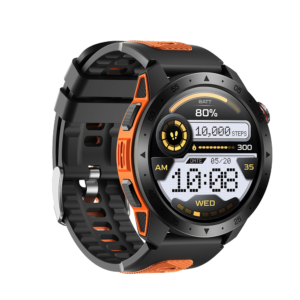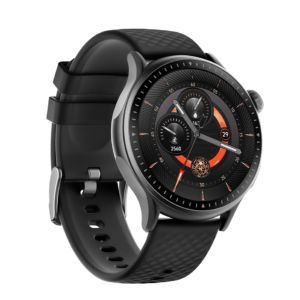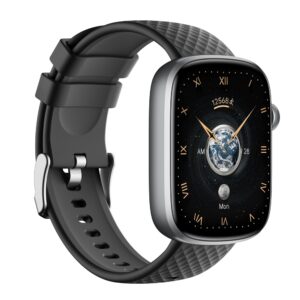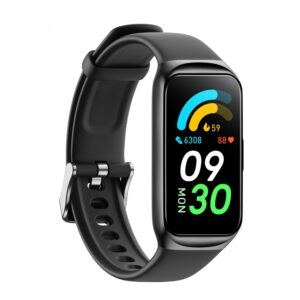Accuracy sells. Everywhere you turn, there’s a heart rate monitor claiming to be the best but how do you answer the important question of which one your customers should trust? The top three heart rate monitors in the market are the chest strap, armband, smart watch and pulse oximetry.
This guide will tell you everything you need to know about the right heart rate sensor for the right user, and how to position your brand properly for this target market.
Key Takeaways
For accurate heart rate monitoring, no single device rules them all. The three featured in this comparison article have their individual strengths and use cases. Here’s a quick breakdown to help you decide on the most suitable solution for your customers.
- Chest strap: Suitable for high-performance athletes and personal trainers. It’s a kind of electrical heart rate monitor that uses ECG (electrocardiogram) technology for accurate heart rate monitor readings during intense workouts. The most popular and professional one is the Polar heart rate monitor, like the Polar H10 chest strap.
- Armband: A flexible alternative to chest straps, offering comfort and convenience for everyday workouts. Worn on the forearm or upper arm, it uses optical sensors to deliver reliable heart rate data without the need for a chest strap. Ideal for gym-goers, cyclists, and casual runners who prefer freedom of movement.
- Smartwatch: Adopts Optical (photoplethysmography) technology for heart rate monitoring. It’s a lightweight and wearable solution for daily wellness tracking. Great for fitness enthusiasts and general consumers that want to monitor their resting heart rate, while also tracking sleep and casual workouts.
- Pulse oximeter: Tracks pulse by measuring oxygen levels to provide readings on oxygen saturation and heart rate. Great for healthcare professionals, hospitals and elderly care homes.
Types of Heart Rate Monitor
The heart rate monitor is classified based on several factors, which includes how long they are worn, the information they capture and if this is sent in real-time or analyzed later. While some are designed to be worn for just a few days, others will monitor your heart activity for longer than a few weeks.
This article will focus on four: the chest strap, armband, smartwatch and pulse oximetry. Let’s take a deep dive into these types.
Chest Strap
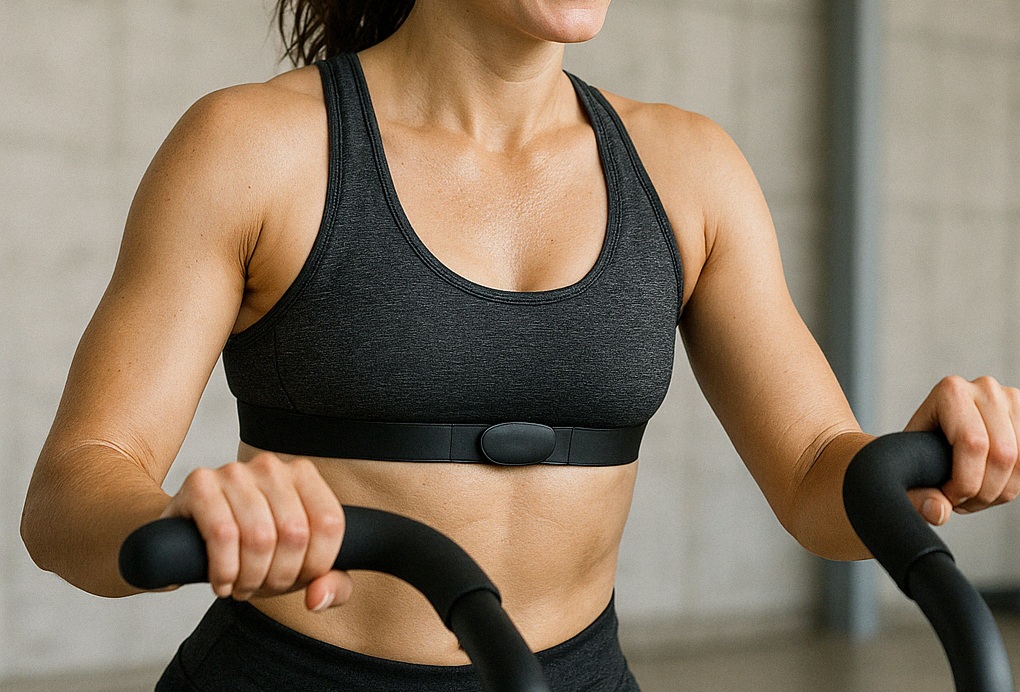
The chest strap heart rate sensor tracks the heart rate using electrical detection. The band is wrapped around the chest, enabling the device to detect any electrical activity immediately. However, these devices work better when the band is wet or coated in a conductive gel where the sensors come in contact with the skin. Both water and conductive gel improve electrical conduction, so these are important for accurate detection of the heart’s electrical current.
From this, you can glean one thing: chest straps are important when accuracy is non-negotiable. They don’t provide estimates but the actual heart rate measured using proper electrocardiogram (ECG) sensors. A great example of this is the Polar chest strap which records the actual heartbeat in real-time to near-clinical precision.
Due this singular factor, they are highly regarded in high-intensity environments like physical therapy centers, professional sports facilities and even clinical research trials. These are situations where the slightest fluctuation could ruin the entire study. Here’s a look at some of the advantages of the chest strap:
- From the discussion so far, accuracy is a top advantage of the chest strap as it uses top-notch ECG sensors
- Provides consistent readings that are not affected by interferences from the environment or other physical and biological factors
- No distractions from a screen
- Long battery life which guarantees usage for a long time
- Built for function over aesthetics
Armband
An armband is a kind of optical heart rate sensor that uses photoplethysmography (PPG) technology to track your heart rate. This method shines light into your skin and measures how much light is reflected back to estimate your heart rate.
You wear the armband on your forearm or upper arm with the sensor side directly touching your skin. It is important to wear it snugly to ensure it stays in place during exercise; this ensures the armband gets a more accurate and stable reading.
Unlike chest straps that detect electrical signals from your heart, armbands use light to measure blood flow. While chest straps are more accurate, armbands offer a good balance of comfort and convenience. It’s useful for many activities such as cycling, yoga, or group workouts, comfortable to wear and does not restrict movement.
Here’s a look at some of the advantages of the armband:
- Lightweight, comfortable fit for extended wear
- Delivers reliable heart rate estimates with near-chest strap accuracy
- Rely on snug skin contact for accurate optical readings
- Suitable for both training and casual use
Smart Watch
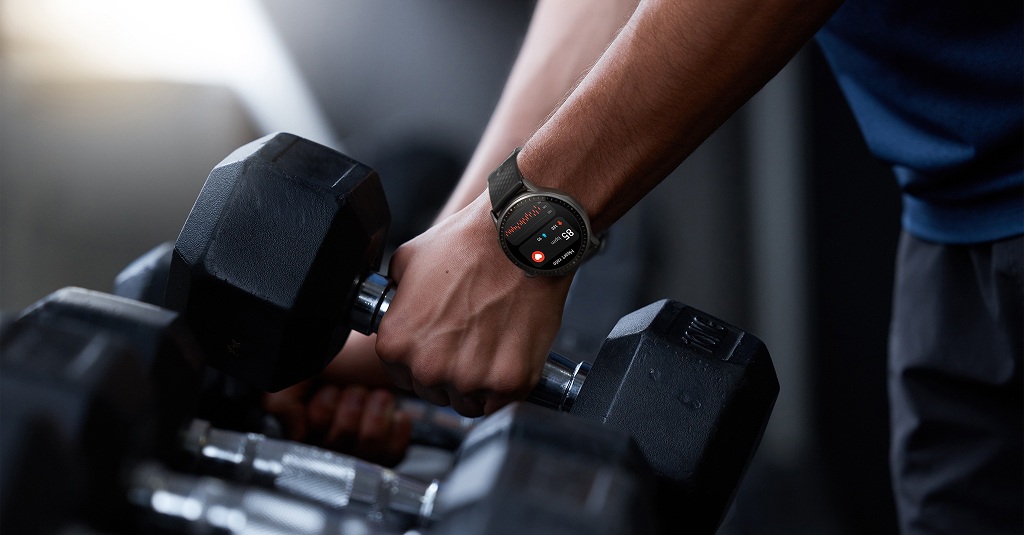
Almost everywhere you turn, there’s a fitness enthusiast with a strap on their wrist that’s both stylish and functional. Wearables have become a staple in the fitness industry, and this works because they have general acceptance among users. Smartwatches as a heart rate monitor feature built-in optical heart rate sensor, blood oxygen sensors, sleep trackers, step counters and as a bonus, notifications from your email. Therefore, they serve as both health-oriented and productivity devices.
So, for the everyday user, they are more than enough. Despite how comfortable and practical they are, optical heart rate monitoring isn’t always accurate. This heart rate monitor uses photoplethysmography (PPG), which uses light sensors directed at the wrist to measure changes in blood volume. However, there are lots of factors that can interfere with this.
All it takes is moisture, especially sweat, vigorous movement, dark skin tones or dark tattoos around the area to interfere with the readings. Sometimes, wearing the smartwatch tightly or loosely can also have a negative impact on the results. That makes them unreliable in professional settings or even for anyone that engages in vigorous workouts. On the plus side, they more often than not show great results for measuring exercise heart rate. There are several plus to using smartwatches for heart rate monitoring:
- An intuitive interface that makes them easy to use and understand
- Integrates with other apps to monitor various factors like heart rate, sleep and stress trends over time
- Comfortable enough to be worn daily
- Aesthetically pleasing
- Mass market appeal
Pulse Oximetry
While pulse oximetry, also known as pulse oximeter, can be considered the least popular of the three, that doesn’t make them any less effective or important. They are common in clinical settings as the wearer would typically have to be on bed rest for effective results. Pulse oximeters are fingertip devices that are great for heart rate monitoring and also measuring blood oxygen saturation. And this is better for resting heart rate monitoring.
It works solely on red or infrared light-based technology, making it quick, non-invasive and extremely effective when the user is not in motion. This device is remarkably accurate in static conditions, such as post-surgery recovery and sleep monitoring. However, factors like incorrect finger placement, poor blood circulation or tense hands could lead to inaccurate readings.
Pulse oximetry is the way to go for long-term health tracking, as it includes impressive advantages like:
- Non-invasive heart rate monitoring
- Functions as a device for both heart rate monitoring and oxygen saturation
- Compact device that’s comfortable to use
- Accurate at rest for patients in hospitals
- Mostly lower cost than chest straps and smartwatches
Comparison Test
We’ve written a lot of words. Now, it’s time for the data to do the talking. We performed a simple experiment. In our experiment, there are six participants. They had different genders, ages, heights, weights, and BMIs. We used three devices in the experiment:
- Starmax GTS8 AMOLED Smart Watch
- Yuwell YX303 Medical-Grade Finger-Clip Pulse Oximeter
- Polar Arm Band
Each device helped us collect clear information. Now we can compare the results and better understand the differences between chest straps, smartwatches, and pulse oximeters.
Polar Arm Band vs Starmax GTS8 AMOLED Smartwatch
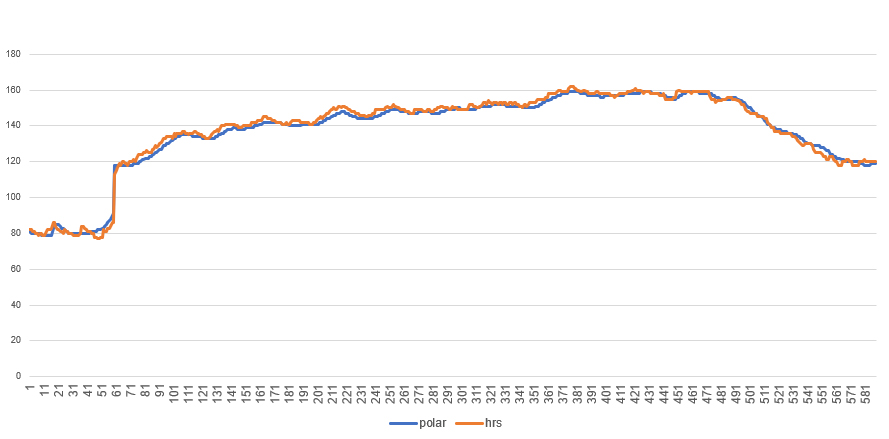
Interpretation: A total of 6 participants were tested, each completing above 8 minutes of running on the treadmill. Although there are slight differences in the readings, both the polar armband and Starmax GTS8 AMOLED smartwatch (Hereinafter referred to as Starmax GTS8) have identical patterns that show consistency in tracking the heart rate. At the beginning, you can notice a brief lag where the smartwatch is behind the armband during a heart rate spike.
This might be due to how the watch was placed on the wrist. However, they are both perfectly aligned as the chart moves on indicating a steady state during exercise. Overall, the difference can be seen as negligible, while the smartwatch and armband both score high for comfort and convenience.
Pulse Oximeter vs Starmax GTS8 AMOLED Smartwatch
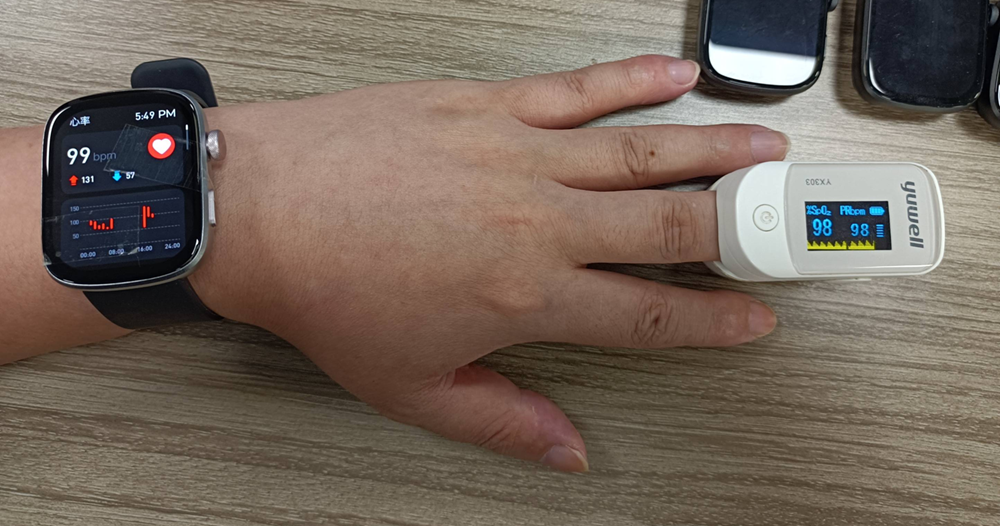
Interpretation: A total of 6 participants were tested, each completing 10 sets of measurements. In these trials, the Starmax GTS8 read 99 bpm (beats per minute) while the pulse oximeter read 98 bpm. Across all readings, the discrepancy remained within a margin of ±3 bpm. These are impressively close readings, which is great as it reveals that the Starmax GTS8 and pulse oximeter are both accurate for measuring the resting heart rate.
Therefore, when there is little motion, the heart rate sensor in the smart watch is just as great as that of the pulse oximeter. On the plus side, the pulse oximeter goes a step further with information on oxygen saturation which is great for monitoring respiratory conditions.
Here’s a summary of the comparison test at a glance:
| Feature | Chest Strap | Armband | Smart Watch | Pulse Oximeter |
| How it’s measured | ECG sensors | PPG sensors | PPG sensors | PPG sensors |
| Sensitivity to motion | Low | Moderate | High | Very High |
| Usage | Worn around the chest | Worn on the forearm or upper arm | Worn on the wrist | Clipped on the finger |
| Accuracy during exercise | ⭐⭐⭐⭐⭐ | ⭐⭐⭐⭐ | ⭐⭐⭐⭐ | ⭐ |
| Accuracy at rest | ⭐⭐⭐⭐⭐ | ⭐⭐⭐⭐⭐ | ⭐⭐⭐⭐⭐ | ⭐⭐⭐⭐⭐ |
| Best use case | High-intensity environment | Fitness and general workouts | Everyday wellness | Clinical monitoring |
How Do These Heart Rate Monitors Work?
To know the right device for your customers, you need to understand how these heart rate monitors work. The chest strap, smartwatch and pulse oximeter all use different technology to measure the signals necessary for monitoring the body’s heart rate. So, here’s a quick breakdown on how this happens.
How the Chest Strap Works
- Place the chest strap snugly around the ribcage, slightly below the pectoral muscles where it will be in close contact with the skin and heart.
- The small electrodes within the strap will pick up electrical signals with every heartbeat.
- This heartbeat generates an electrical impulse that will be detected by the ECG sensor
- A central module receives the data, converts it to readable information in real-time and transmits this wirelessly depending on the way the chest strap was designed.
How the Armband Works
- Wear the armband on your forearm or upper arm. Make sure it fits tightly to keep the sensor in place while exercising.
- The armband is equipped with PPG sensors including LEDs and a photodetector.
- The lights shine into your skin. When your heart beats, blood moves through your arm.
- The LEDs shine light into the skin. As blood flows, the amount of light absorbed changes.
- The sensor checks how much light comes back, and the armband turns it into heart rate data. This data will be sent to your phone, watch, or fitness app via Bluetooth.
How the Smartwatch Works
- Wear the smart watch around the wrist, firm enough to stay in contact with the skin but not too tight to avoid restricting blood flow.
- The back of the watch contains PPG sensors that serve as the detectors in form of LEDs.
- The LEDs shine light into the skin, where it is absorbed by the blood
- As blood flows, the light reflects back depending on the volume of blood at that moment as more blood means more absorption.
- The smartwatch analyzes these data to determine each heartbeat using the rhythmic pulsing of blood.
- These are converted to readable information and visible on the watch display, usually in sync with other apps for wellness insights.
How the Pulse Oximeter Works
- The subject should be at rest, as this works with minimal motion.
- Clip this to the fingertips which is a thin, capillary-rich part of the body
- The pulse oximeter shines both red and infrared light from the clip through the finger.
- A sensor on the other side of the finger detects the amount of light passing through the tissue and blood volume in the finger fluctuates with each heartbeat.
- A digital screen reveals the readings of the heart rate in beats per minute and estimates of the oxygen saturation levels.
Choosing the Right Device for Your Market
It is important to choose the right device for your customers. Some people need high accuracy, but many just need basic health tracking. Medical-grade devices are often very expensive. Most people do not need that level of detail for everyday use.
Smartwatches are a better choice for most users. They are easy to use and cost less. The user just needs to wear the watch and connect it to an app. Then, they can start tracking heart rate, steps, sleep, and more. That is why smartwatches are an ideal and trendy option for many people.
Who Needs a Smartwatch?
Professional medical-grade heart rate monitors are very accurate, but they are often too expensive for most people. Because of this, smartwatches are a better choice for many users.
Smartwatches are not just for people who love technology. Many people can use them in daily life. They are easy to use and can track important health data like heart rate, steps, sleep, and more. This helps people learn about their health. Then, they can change their fitness plans if needed.
So, here’s a non-exhaustive list on who can benefit from using a smartwatch:
- People who like to work out
- Personal trainers and coaches
- Pregnant women
- Runners, cyclists, and swimmers
- People with diabetes or other health issues
- Military workers
- Older adults
- Office workers who want to move more
In short, smartwatches are helpful for both fitness and health. They are useful for many kinds of users.
Why is Selling Smartwatches a Good Idea?
Because smartwatches are simple and useful. They are not too expensive. Most people can afford them. This makes them an ideal and trendy product for people tracking their wellness and fitness nowadays.
Big fitness and health tracking wearable brands like Apple, Polar, and Fitbit are known for good quality. It’s no secret that these fitness brands have set themselves apart in the market for their accuracy and performance. For example, the Polar H10 chest strap is one device that enjoys huge patronage.
But these devices are very expensive. Not everyone wants to spend that much.
Smartwatches with lower prices and good performance are a better choice for many people. They are now one of the best-selling categories on both online platforms like Amazon and in physical stores. They attract more customers and bring higher profits.
How to Find the Best Smartwatch Manufacturer
To offer the best value to your customers, it’s important to choose the right manufacturing partner. Here’s what to look for:
- Experience: Choose a manufacturer with years of experience in making smartwatches.
- Certifications: Make sure they meet global standards like CE, RoHS, and FCC.
- Product Testing: Always ask for samples to test for accuracy, comfort, and durability.
- Customization: A reliable supplier should offer branding, feature, or packaging customization.
- After-Sales Support: Good support includes timely delivery, software updates, and service guarantees.
Why Choose Starmax Technology?

Starmax Technology checks all the boxes for a reliable smartwatch supplier:
- Over 10 years of experience in smartwatch design and production
- Certified with ISO 9001, amfori BSCI, CE, RoHS, FCC, and more
- Full support and personalized solutions for OEM and ODM orders
- Intelligent manufacturing center to achieve rapid delivery of mass production
- High product quality with strong testing standards
- Dedicated after-sales service and fast global shipping
Whether you’re entering the wearable tech market or expanding your product line, Starmax can help you deliver value, reliability, and innovation to your customers.
Conclusion
It’s time to answer the question. Which one is the most accurate for heart monitoring? The truth is that the answer depends on who is using it, how they are using it and why. If accuracy during high motion activities is the goal, chest straps with their ECG-based heart rate sensor technology are the right choice.
Pulse oximeters are reliable for clinical settings. Finally, smartwatches are much better for resting heart rate and everyday tracking, as they place a premium on multi-functionality and convenience. So, your winning strategy will involve finding a good smartwatch manufacturer and matching the right smartwatch to the right user.

